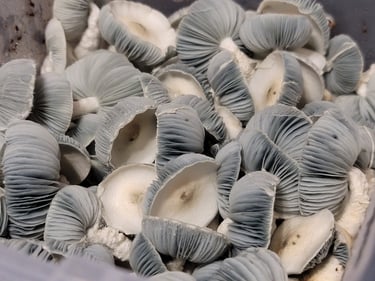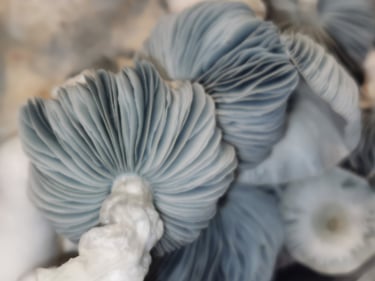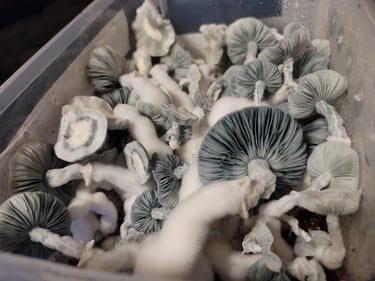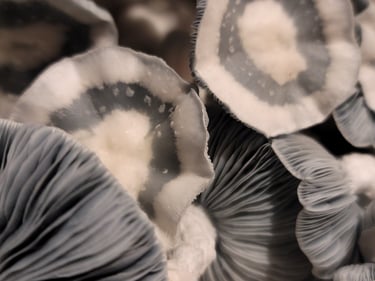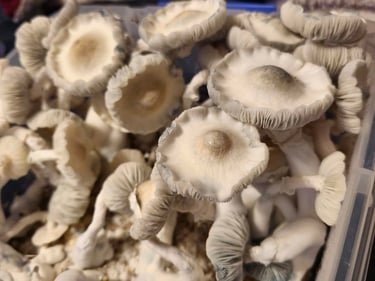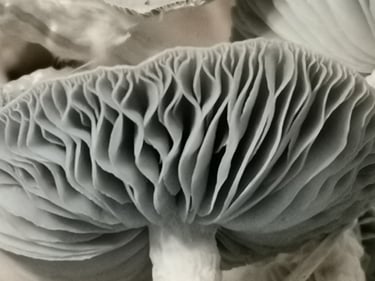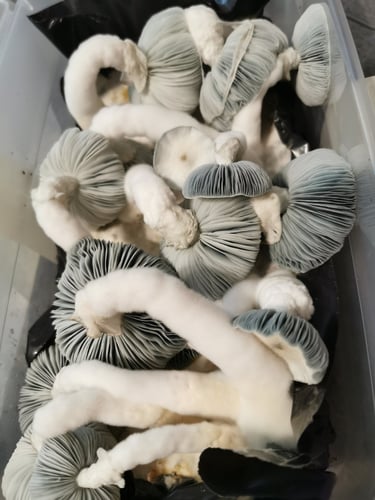Jack Frost
the birth of an icon
GENETIC SPOTLIGHT
Dave Wombat
10/1/20245 min read
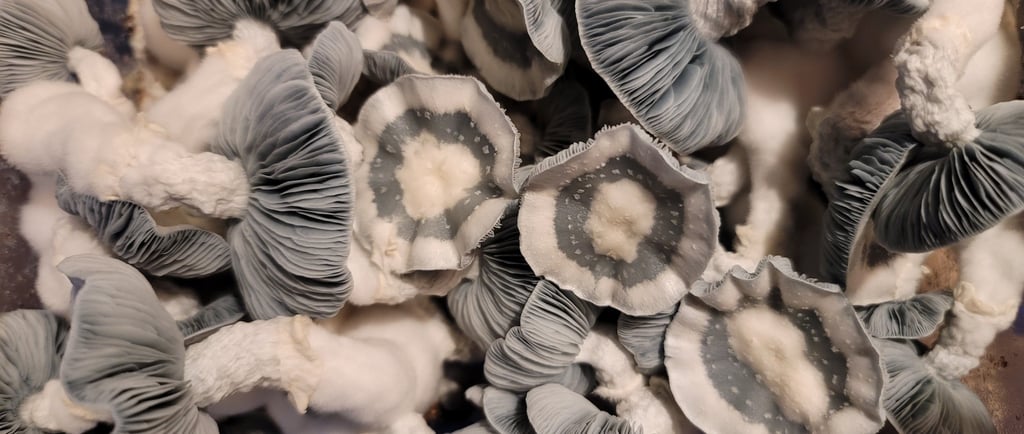

This is a tale not just of a particular variety, but also of mushroom breeding in general, as this is really a key part of Jack Frost's history. How do you cross two mushroom varieties? This question was met in the past with vague references to snake venom and other obscure procedures, basically discouraging anyone from trying....but its really quite simple. These mushrooms, despite their different looks and the arbitrary variety names we give them, are all still the same species, and can mate as easily as different dog breeds.
Each mushroom spore contains half of the genetics needed to produce a fruiting culture. When a spore germinates, it produces hyphae, long strands that grow outwards until it meets a compatible mate...hyphae from a different spore. These initial hyphae are monokaryons, having one nucleus per cell. When they meet and clamp together, they share copies of their nuclei with each other and become dikaryons, having two nuclei per cell...genetics from each of the parent spores. This dikaryotic mycelium is then the culture capable of reproducing by growing mushrooms.
The controlled method for breeding begins with isolating monokaryons from single spore germinations, usually by plate streaking or serial dilution methods, verifying things by microscope, and then pairing the two chosen monos on a plate so they can bond. The more naturalistic approach is to simply put spores from both parents on agar together, and take the chance that they might breed. Unlike the controlled breeding, this way doesn't come with any guarantees, and you're left to assess the fruits of the cross attempt to try and sort out what might be either parent variety, crosses, or some of each.
Jack Frost was one of these uncontrolled crossing projects, but it was attempted in a novel way. I had previously used a cross-streaking method for the KSAT and ChocoTAT crosses, streaking the parent swabs in a tic-tac-toe pattern on agar, and then selecting mycelial colonies from the points where the lines intersected as being most likely to be mated successfully. With Jack Frost, I decided to use a single swab to collect spores from both of the parent fruits, and then stuck the entire swab head into an agar plate. My concept was by using freshly collected spores from both parents, the likelihood of them germinating simultaneously and then bonding would be increased.
The parents of Jack Frost: Wombat TAT, and APE
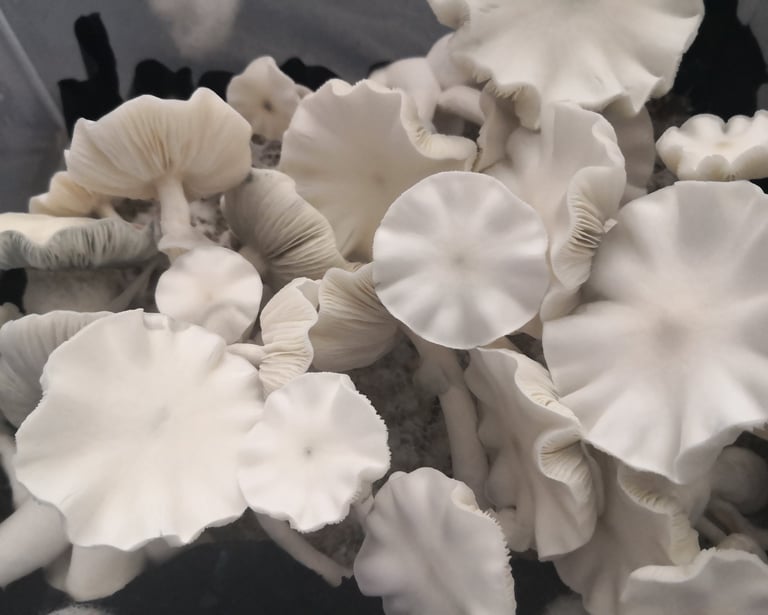


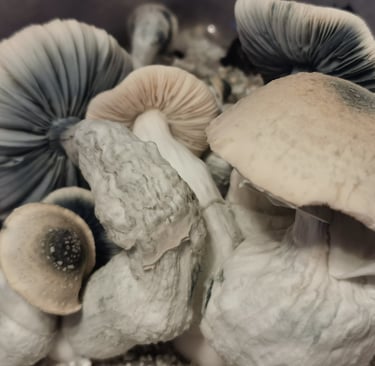
Given the uncontrolled "maybe mating" of this method, there's no way of telling what mycelium is growing in the dish...so the entire first spore plate is sent to grain, as long as it appears clean. If you were to take transfers, there'd be no way of knowing if you were blindly isolating crossed mycelium or just one of the parents. The initial plate, labeled "TAPE" at the time for TAT/APE, was indeed clean ,and worked its way through grain and then into a tub. Colonization was rapid, and soon there were small pins forming.
The first sign that something was different: the pins had a distinct orange hue when they were very small. This color disturbed me a bit at first, but it rapidly diffused as they grew bigger and it was soon obvious that they maintained the albino traits from their parentage. As they continued to grow, they seemed unsure of what shape they should take....some were skinny, some were fat, but none of them looked quite like either the Wombat TAT or APE. The growth speed was also intermediate between the fast growing TAT and the slowest of slow APE.
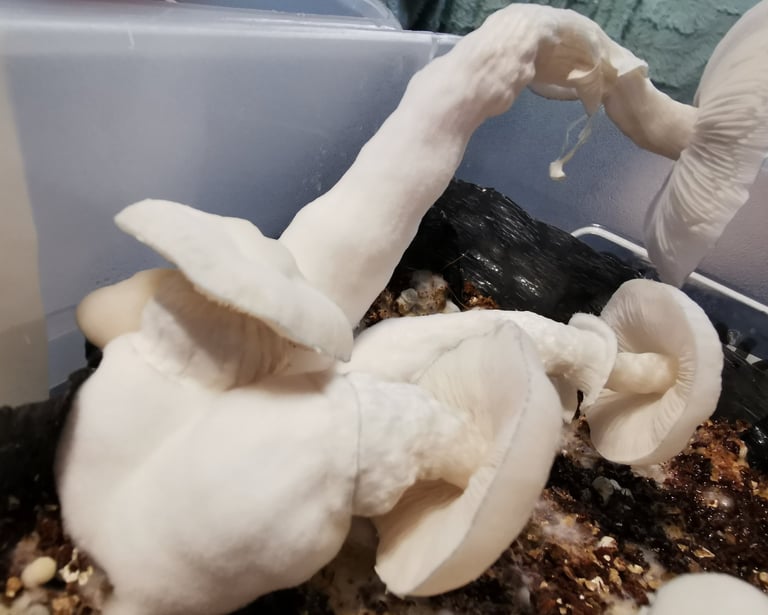

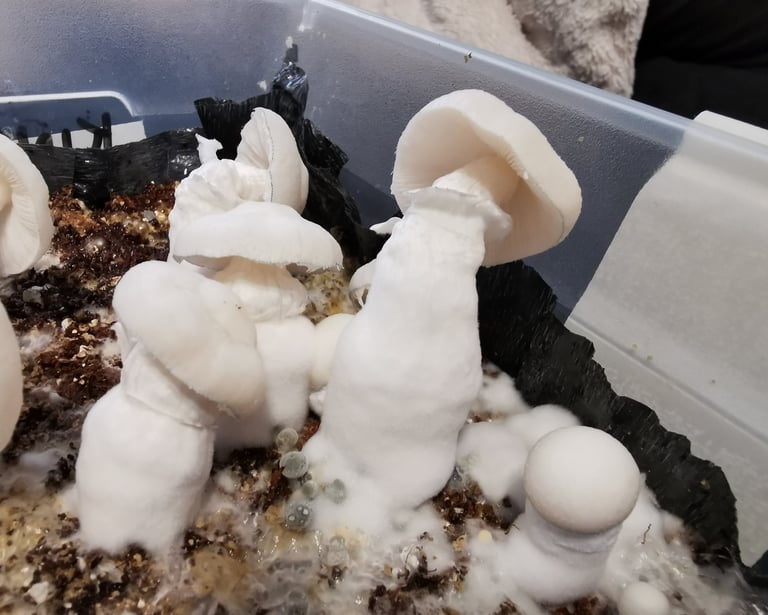

Even so, I still had doubts as to whether it was successfully crossed....mushrooms will mushroom, they can often change and do something different due to environmental conditions, contamination, or even just for the sake of changing...so growing one tub of anything isn't enough for confirmation. It was after the 2nd generation completed its fruiting that I felt confident it had been a success. Besides the different shapes and growing speed, what quickly became Jack Frost's most popular feature had manifested....its blue gills. Now, lots of albinos will have gills that blue at maturity....the APE parent of the cross had the most astounding blue gills I'd ever seen. What made Jack's stand out was the intensity and consistency of the bluing, and if functioned as a visible sign that the fruits were fully mature and ready to pick.
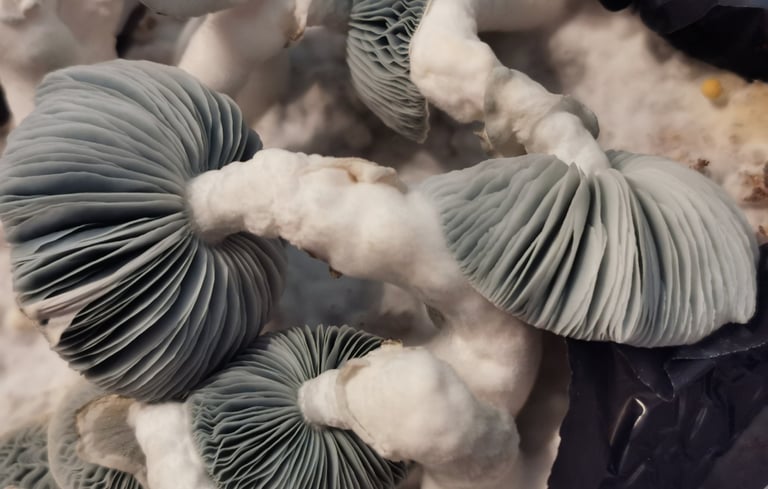

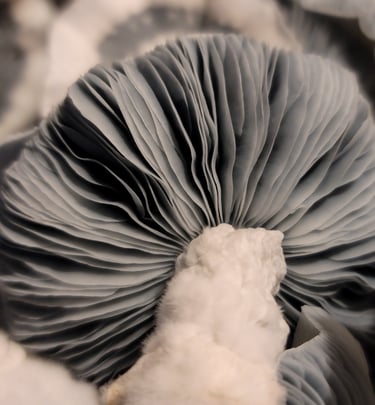

The color of the gills shifts from pure white to a very pale blue-grey at first, and that is the ideal time to pick the fruits when they are still firm, but spores are present and mature on the gills. A couple days later, they'll be more intensely blue-grey, as pictured above, and are still good, but the stems are beginning to soften at this point. Another couple days, and they'll be dark navy blue, and will be fairly soggy and fragile for picking or swabbing, but they do make for some cool pictures. It was this blue-and-white color combination that inspired the "Jack Frost" name, which definitely sounded better than calling it "TAPE".
Jack Frost was an instant success upon its release...it had good looks and tended to be highly productive, all capped off with a catchy name. It became so popular that shortly after I released it, it was suddenly for sale as spores or plates everywhere you looked, and I honestly made very little from it in sales myself, besides that initial release. This didn't really bother me, as I've always been more interested in doing the work than in vending things, and besides I was already knee deep in a dozen more projects. Jack Frost doesn't need me to spread it, its doing just fine on its own...but I am also occasionally sought out by people interested in getting it directly from the source.
I eventually rekindled the project a couple years later, starting from early generation spores and starting some new crosses with it as well. The classic Jack Frost is joined by a thicker sibling with a thick nippled cap, labeled Jumbo Jack; crossing with Golden Halo produced the extra-dense PermaFrost; and crossing with Crooked Mystery produced the obviously named and shaped Crooked Jack.
And now, a gallery of Jacks
